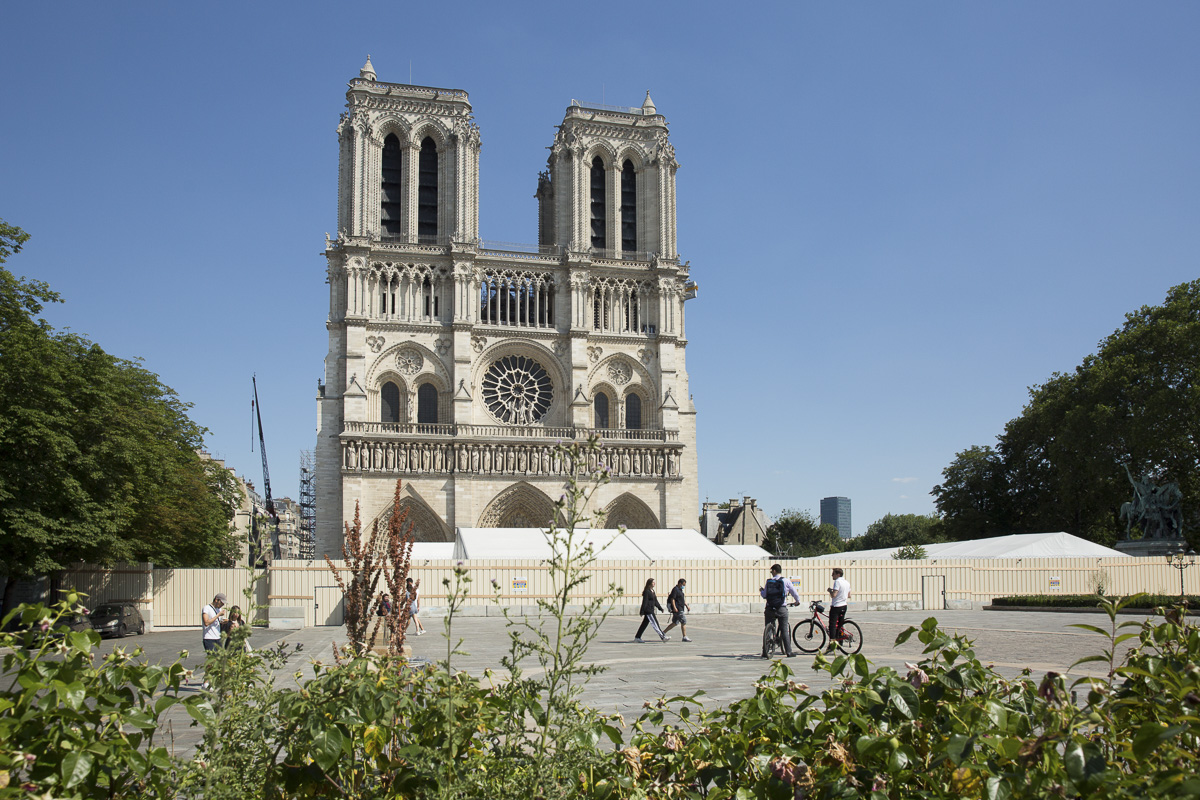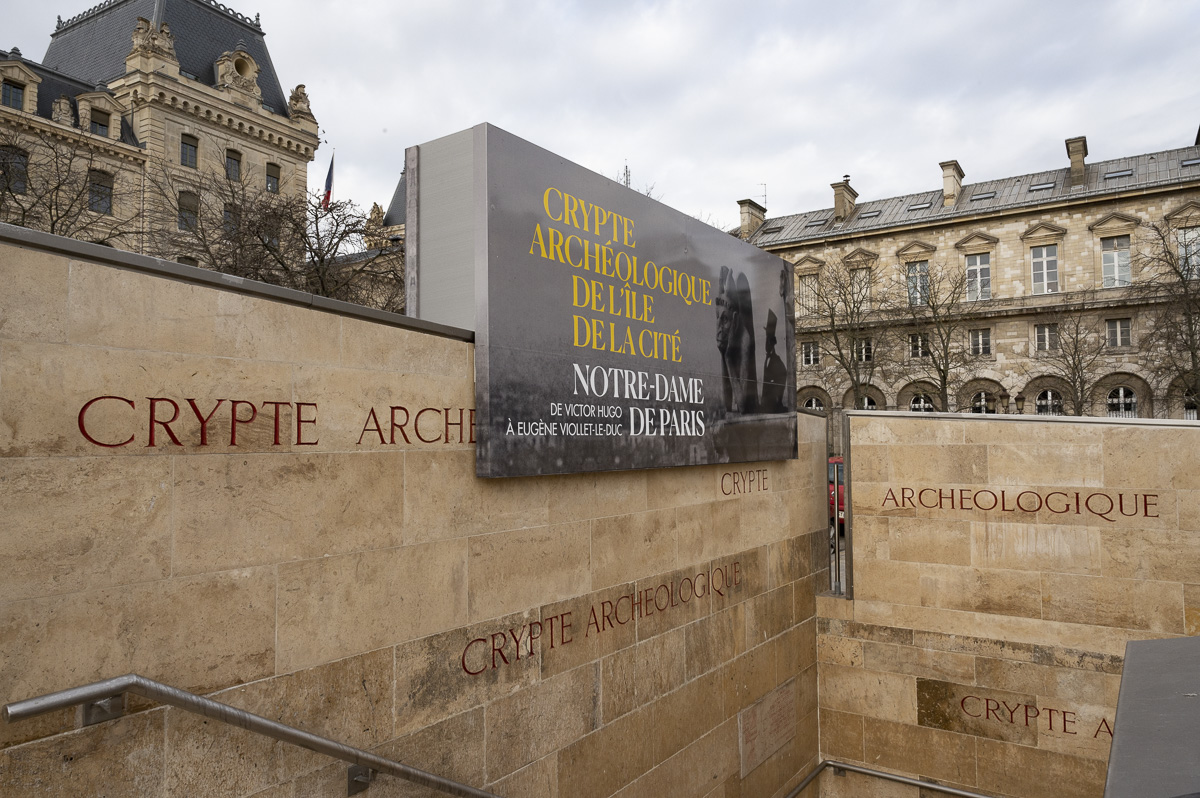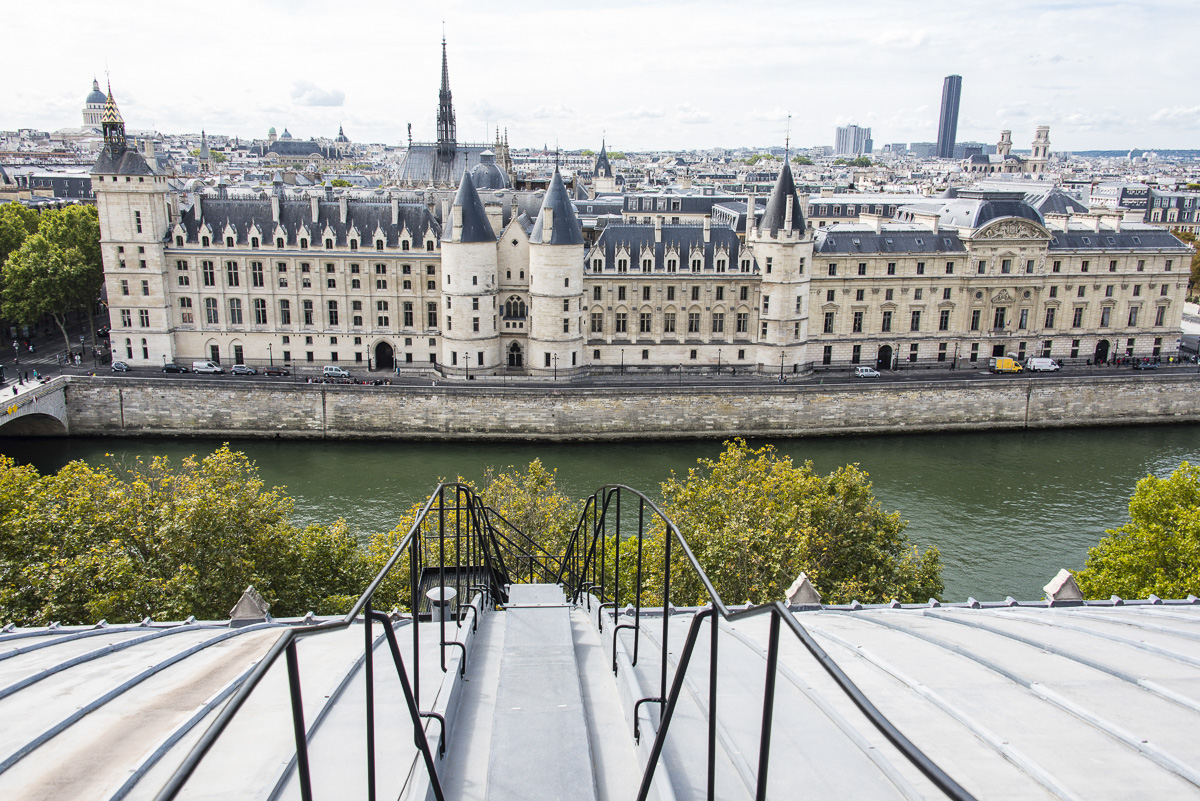Notre-Dame’s surroundings are in for a makeover
Focus
Mise à jour le 30/08/2021
Attention, cet article n'a pas été mis à jour depuis le 30/08/2021, il est possible que son contenu soit obsolète.
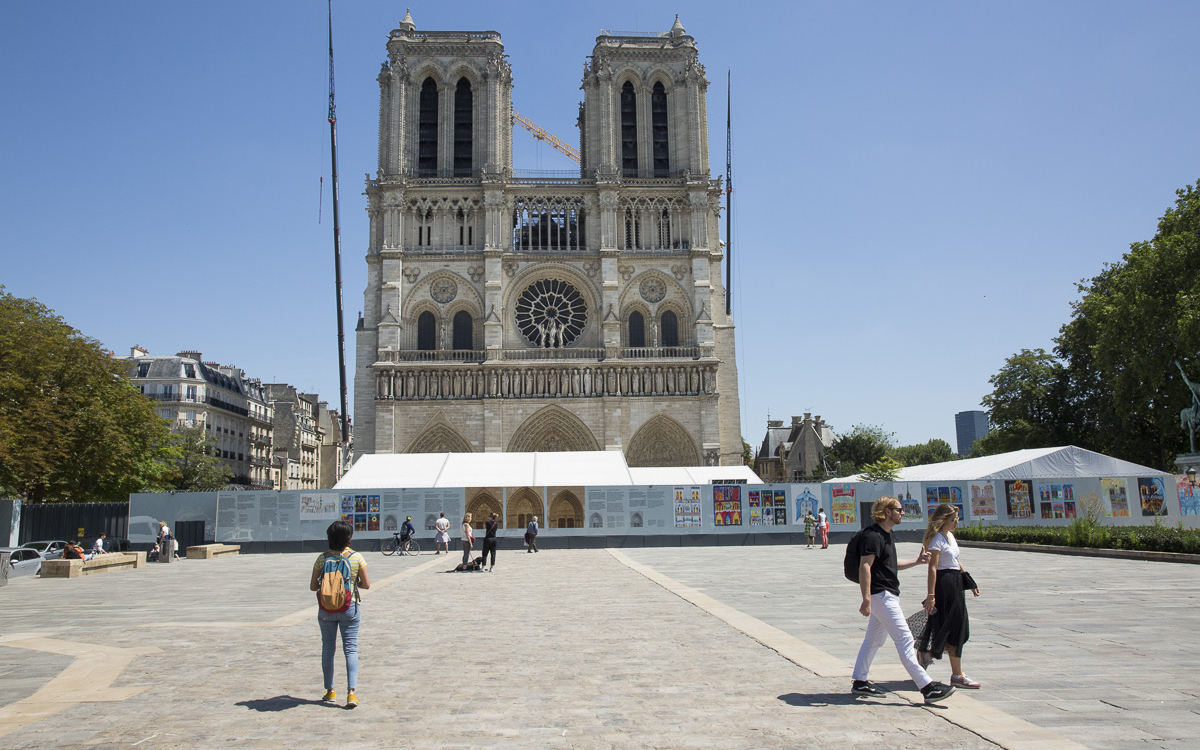
Sommaire
Two years after the terrible Notre-Dame fire, the City of Paris is set to play its full role in the rebirth of this outstanding site.
Contents
Share
Two years after the terrible Notre-Dame
fire, the City of Paris is set to play its full role in the rebirth of this
outstanding site. Alongside the Cathedral’s restoration, the City of Paris has
decided to undertake a project on redevelopment and enhancement of its
surroundings, which will further highlight Notre-Dame and help ensure better
reception of visitors.
The project on redevelopment of
Notre-Dame’s surroundings is complementary to the Cathedral’s reconstruction
carried out under the aegis of the Établissement Public de conservation et de
Restauration de la Cathédrale de Notre-Dame de Paris (EPRND – Public Body
Responsible for the Conservation and Restoration of Notre-Dame de Paris
Cathedral) in order to bring Parisians back to their city’s birthplace and
welcome visitors under better conditions.
Rethinking and redeveloping the area
surrounding Notre-Dame de Paris in order to better highlight the edifice and
provide its visitors with a better welcome. That was the subject of a
Resolution passed by the Paris Council on 15 April, two years after the
terrible fire that swept through the Cathedral.
The Resolution outlined the general project
and the consultations that would be required, along with its funding, the
provisional calendar and its governance with the State and the Diocese. Above
all, it provided for a public consultation phase that would progressively inspire
the project’s design specifications.
Take
part in the consultation
Extensive consultations began on 7 June
2021. Goal: breathing new life into this outstanding site by providing a new,
more welcoming environment for Parisians and visitors alike. To take part in the
consultation, rendezvous on idee.paris.fr
The area concerned
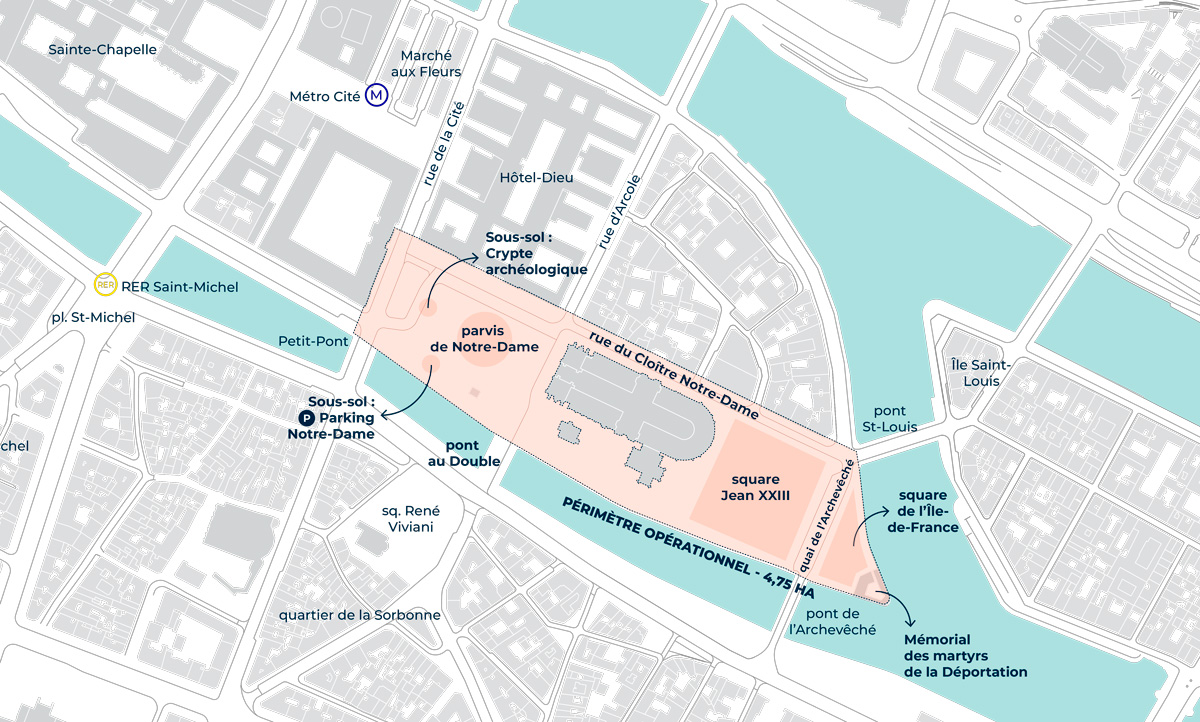
Plan of Notre-Dame de Paris’ surroundings
Crédit photo :
Ville de Paris
Everyone is already well aware of the
project for the Cathedral’s reconstruction, currently being carried out under
the aegis of the EPRND (the public
body responsible for the conservation and restoration of Notre-Dame de Paris
Cathedral). This is a much larger-scale project, concerning the Cathedral
Square and its environment. It forms part of the plan for renewal of the
centre of Paris through the
pedestrian conciliation initiatives and improvements carried out in
the context of "Embellir votre Quartier" (Beautify your
Neighbourhood).
In concrete terms, redevelopment will
concern:
-
the Cathedral Square (parvis) and its underground areas, including the Archaeological Crypt and two-level car park;
-
Square Jean XXIII and Square de l’Île-de-France (behind the Cathedral) up to the tip of Île de la Cité;
-
the upper and lower Quais de Seine;
-
the adjacent streets (rue du Cloître-Notre-Dame, rue de la Cité, quai de l’Archevêché).
The task is no easy one as the area is surrounded by high
heritage-value buildings and landscapes, all of which are recognised and
protected, in particular by their location close to the "Paris, Banks of the
Seine" site inscribed on the UNESCO World Heritage List in 1991.
Notre-Dame is the centre of this
outstanding site. Its urban environment
is marked by the presence of imposing public buildings from Haussmann’s era,
giving it a truly monumental aspect. Apart from the Cathedral and the
Conciergerie, only Place Dauphine and the heart of the block located between
rue d’Arcole and rue du Cloître-Notre-Dame escaped the massive demolition work
carried out in the 19th century. Hence, the Notre-Dame site is by no
means homogeneous and has already undergone numerous changes.
In addition, although the site is a major
tourist attraction and easy to get to, it attracts few Parisians as the shops
on the Island are essentially tourism-orientated.
Findings
The project on redevelopment of
Notre-Dame’s surroundings is in line with a number of findings identified in
preparatory studies (available on this page).
-
An outstanding historical, landscape and environmental heritage , some of whose components (the Archaeological Crypt, Square de l’Île-de-France and the Deportation Memorial) and treasures tend to be little known to Parisians and the public at large;
-
High usage pressure, with intensity of flows mainly concentrated on the Cathedral Square, resulting in a lack of the reception services and amenities expected of a site of national and worldwide stature;
-
A site little visited or appropriated by Parisians themselves, as shops and usages essentially focus on tourism;
-
High minerality likely to create a heat island , in particular on the Cathedral Square, which is poorly adapted to the necessary account taking of the effects of climate change;
-
A scarcely visible link to the Seine and the Island’s green spaces, despite being so close to the "Paris, Banks of the Seine" UNESCO World Heritage site and the existence of Square Jean XXIII and Square de l’Île-de-France behind the Cathedral.
Getting Parisians to come back to the site and providing better reception of visitors
The redevelopments project’s main aim is to
bring Parisians back to the historical heart of Paris and welcome visitors in
better conditions. This involves completely rethinking the way the Cathedral
receives its visitors, its accesses from the Cathedral Square, management of
flows, continuity with the Seine, the site’s vegetation, itineraries across the
Island, and perspectives.
The main challenge will therefore be to
make use of and highlight every part of the area concerned, through the four
objectives set out in the Resolution passed
by the Paris Council:
· preserving and revealing the Notre-Dame site’s historical, heritage
and landscape treasures, by ensuring unobstructed views of the Cathedral on all
approach routes, and also by affirming the site’s identity through unpretentious architectural development;
· diversifying its uses in time and space, in particular by providing
the Cathedral Square with new functions and ensuring that it once again serves as a Parisian square in everyday
use, and by making more of the Archaeological Crypt;
-
providing fluid reception and itineraries that are pleasant and safe for everyone (tourists, local residents, workers, Parisians, worshippers, etc.), by rethinking conditions for reception of visitors to the Cathedral, providing the parvis and its sublevel with all necessary amenities (luggage storage, toilets, information, etc.);
-
improving the site’s environmental quality, in particular by building up biodiversity, regenerating and consolidating plant life and treescapes, and creating plant continuities between the green spaces around the Cathedral, the Seine and the Cathedral Square;
The project should minimise its carbon footprint throughout its
implementation (choice of materials and modus operandi of work). Use of the
Cathedral Square’s existing sublevel (currently a car park) will help ensure
that it does.
Project Manager selection procedure and governance
The project is the subject of an
international procedure for procurement of project management services,
launched in spring 2021. It targets multidisciplinary teams made up of
architects, town planners and landscapers, with assistance from specialists in
heritage, the environment and the programming of public space, and engineering
firms.
Selection of project managers is set to be
in the form of a "competitive dialogue" with 4 teams "accepted
to dialogue" (a kind of preselection). This course of action should enable
each team to find the right balance in its project in the face of the many
challenges involved, by dialoguing with the Contracting Authority (City of
Paris, in partnership with the Diocese and the EPRNDP – the public body
responsible for the conservation and restoration of Notre-Dame de Paris
Cathedral).
Citizens’ participation
The project will also draw on three ways of
involving citizens, who will have their say at various stages in the project’s
development:
-
The preliminary consultation, the subject of this website, in which the general public is invited to participate in order to contribute to thought on the project’s objectives upstream of its definition, during two thematic rounds. The expectations expressed will be summarised at the end of each round and in a report on the consultation communicated to the teams preselected in the context of the international consultation.
-
A Citizens’ Committee, made up of a group of citizens picked at random, bound by confidentiality and involved in the analysis of candidate projects on specific themes. Their opinions will be communicated to candidates at each phase of the dialogue. They may result in adaptations to the programme and will be taken into account by the jury during selection of the winning project.
-
A college of citizens/associations will be included in the jury selecting the winning team responsible for developing Notre-Dame’s future surroundings.
Provisional calendar
The main stages in the operation are as
follows:
-
second quarter 2021: launch of consultation of designers;
-
summer 2021: jury for selection of the four teams accepted for the competitive dialogue;
-
summer 2022: jury for selection of the winning team;
-
2023 - 2024: design studies, submission of administrative authorisations;
-
following the Olympic Games: start of work.
Funding
The operation will be funded by the City of
Paris, to the tune of 50 million euros.
The project also benefits from a
partnership with the "Chantier Scientifique" (Scientific Project), an
organisation resulting from collaboration between the National Centre for
Scientific Research (CNRS) and the Ministry of Culture, and which is already
operating in the context of the Cathedral’s reconstruction.
Finally, the design software publisher
Autodesk has offered to lend its assistance to the City by creating a 3D
topographical model of the entire area covered by the project including its
sublevels, and will also create 3D models of the various candidate projects in
order to help with selection of the winning team.
Studies on Notre-Dame’s surroundings
A range of studies has been carried out
with a view to providing the keys to interpreting the site.
Votre avis nous intéresse !
Ces informations vous ont-elles été utiles ?
Attention : nous ne pouvons pas vous répondre par ce biais (n'incluez pas d'information personnelle).



